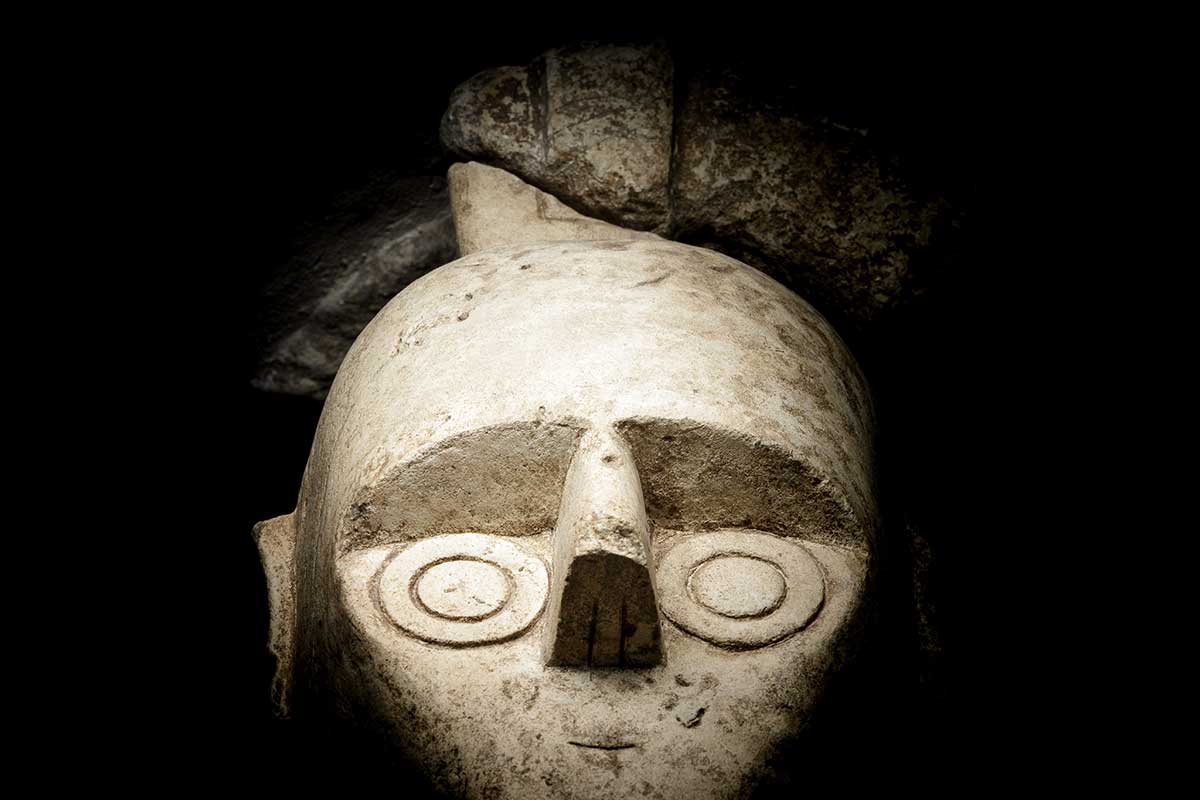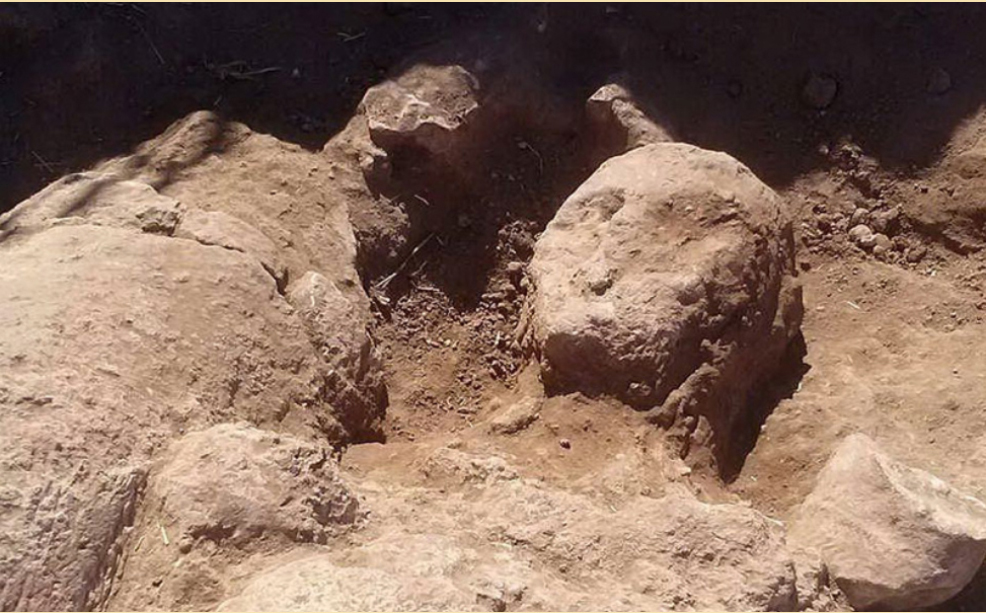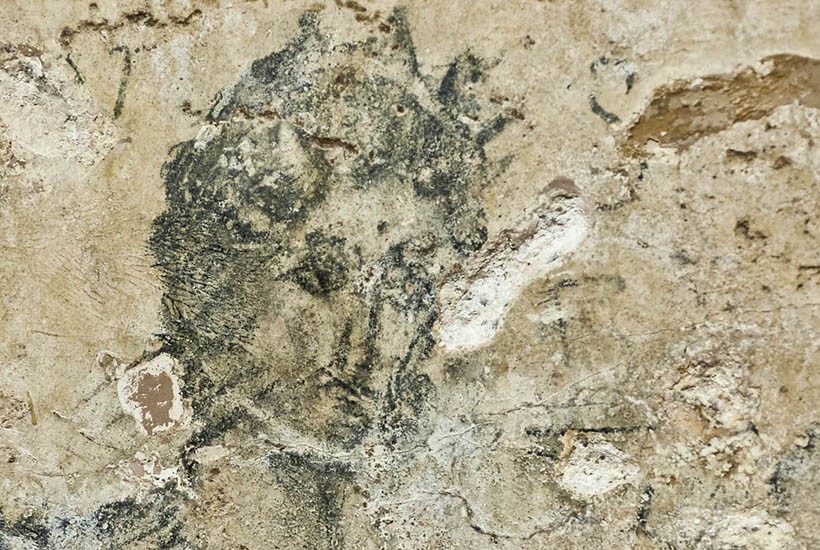Archaeology narrates
The research conducted in the archaeological site narrates that the sculptures and necropolises of Mont’e Prama are the fruit of a cultural revolution that began in the last centuries of the bronze age and had its peak during the iron age (about 950-730 BC).
Interpretation the Mont’e Prama site
Experts are studying and debating the nature of the site and the significance of this impressive group of statues.
The figures, statues, models of nuraghes and betyls form a coherent whole, while varied as to size, style and workmanship.
Who were the artisans who created these works?
What was the relationship between the sculptures and the necropolis?
1
According to some scholars, the statues stood close to the necropolis and, together with the buried dead, represented the highest social class as to military valour (archers and warriors), in the religious sphere (boxers), and in politics (nuraghe models).
2
According to others, the statues represented their forebears, the mythical heroes of Nuragic legend, while the models of the nuraghes were a symbol of the identity and cohesion of the community and the betyls recalled the ancient sacred stones of the tombs of the builders of the nuraghes.
3
Yet another school of thought sees the statues as commemorating an important event in local Nuragic history.
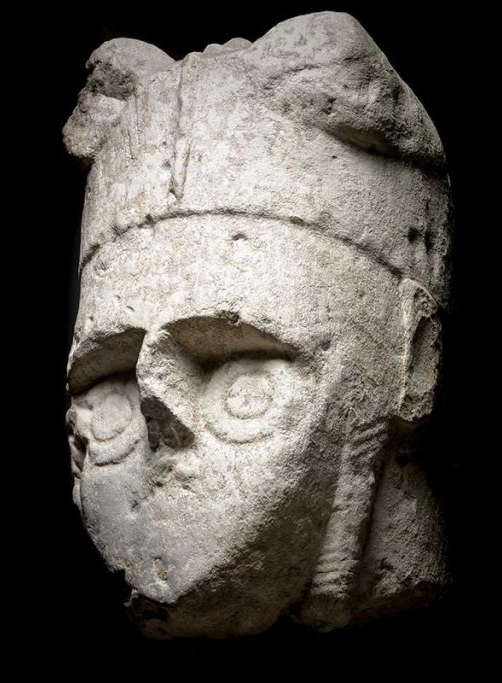
All agree that the statues had strong symbolic significance, aiming at sending a message of identity and control of the territory, both to the local communities, and to the foreign folk of eastern origin who in those years were coming from the sea.
The sculptures of Mont’e Prama expressed identity and belonging,
these values were especially significant at a time of change, marked by deep tensions and transformations.
Timeline
The current dating is based on a new, more accurate assessment of the scarab and the necklace beads from the tomb Tronchetti 25, together with all the other objects found in the excavations. Based on their analysis, most researchers currently agree that the tombs and the sculptures were constructed between the end of the 9th and the first half of the 8thcentury BC, thus in an advanced phase of the early Iron Age.
This dating largely matches the first calibrated radiocarbon datings of eight skeletons found in the tombs, which unfortunately still have a high margin of error.
As regards the chronology of the necropolis, it is supposed to have developed via a succession of groups of structured tombs, with covering slabs in sandstone, running from north to south. The simple well tombs, which occupy a wide stretch to the east of the structured tombs, seem overall to be older, and they presumably had no sculptures.
Thus, based on the findings made so far, the Mont’e Prama sculptures belong to the iron age. This means they were created by a society that had changed radically from that of the bronze age.

Still unanswered questions
The necropolis of Mont’e Prama, above all in the ‘Bedini’ section, shows three different phases of use: the first and earliest consists of shallow well tombs, each containing one body. In the second phase, new single or grouped tombs were constructed covered with slabs of stone, arranged with no clear design, and a third phase consisting of tombs with square covering slabs, set perfectly in line.
The fragments of the statues were found above the aligned tombs and in a free area in front of them, which had a paved road.
It seems evident from the study of the findings and of the archaeological strata that the statues were broken already in ancient times and then laid intentionally above and next to the tombs. In the heap of pieces of the sculptures, pottery ceramic material of the Nuragic, Punic and Roman eras, was also found. Thus, one of the critical points of research is to clarify when and how this heap of stone fragments was made.
There are still many unanswered questions concerning the relationship between the necropolis and the statues, their original position and how they ended up in the heap.
Where exactly did the statues stand: on the stone slabs closing the tombs, in a nearby area close to the necropolis, or somewhere else?
When were the statues destroyed, why and by whom?
Why, once destroyed, were they heaped on top of the tombs?

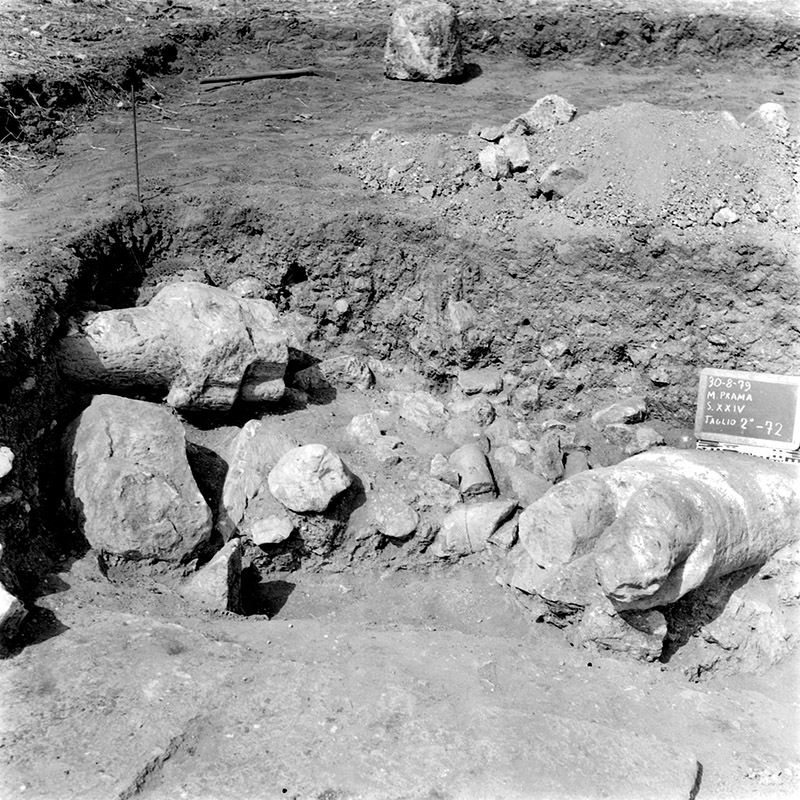
Original position of the statues
The conditions of the finding do not allow us to establish with certainty where the statues originally stood. The fragments were all mixed up and scattered. For instance, pieces of the same sculpture might be discovered in relatively distant areas within the dump and in very different situations.
There are several theories as to the original arrangement of the statues: some scholars suggest that they were set in an area far from the tombs to mark off a possible sacred area, others think that they stood in the necropolis, or even on top of the slabs covering the tombs.
All agree that the statues had a clear and intentional relationship with the necropolis: the fragments are clearly concentrated on the covering slabs, their number decreases sharply within a few metres away from the funerary area, while they are heaped in several levels on top of the slabs and next to them.
Destruction of the site
In what period were the statues destroyed?
Currently, there are three main theories: according to the first, the complex was destroyed as a consequence of the internal struggle between local Nuragic tribes. The second feels that the destruction was a deliberate act by the Phoenicians of Tharros near the end of the 7th century BC. The third is that the statues were smashed in the second half of the 4th century BC by the Carthaginians present on the island.
Present status of the debate
Archaeologists are investigating the nature of the site and the meaning of the sculptures, as part of a broader reflection on the decline of nuragic civilisation and the evolution of relationships between the different nuragic communities, and between them and the phoenician seafarers, traders and craftsmen who were settling on the coasts of Sardinia.
The statues, the nuraghe models and the betyls constitute an organic but also varied complex as to size, style and workmanship. We do not know whether they belonged to a single figurative and ideological project and whether they were carved over a short period of time by a single group of craftsmen. Nor do we know their precise arrangement and function with respect to the necropolis or with any other still unfound structures.
So, what could have been the meaning of the statues?
According to one school of thought, the statues were associated with the buried dead as the members of the social elite. The archers embody military values, the boxers represent the religious sphere and the nuraghe models represent political power.
Other scholars suggest that instead of representing the deceased themselves, the statues celebrated their ancestors, evoked as mythical heroes of nuragic legends; the models of the nuraghes symbolised the identity and unity of the community, and the betyls represented the sacred stones of the tombs of the builders of the nuraghes.
Yet others argue that the statues might mark an important event in local nuragic history.
The funerary and sculpture complex is often defined as a heroon, a greek word for a shrine erected to commemorate heroes and to celebrate the traditional values of the community and strengthen its sense of identity through the cult of heroes.
The sculptures of Mont’e Prama thus indicated identity and belonging, which were especially significant at a watershed time in history, marked by deep tensions and transformations. Thus, they must have had a strong symbolic character, conveying a message of identity and control of the territory, both to the local communities and to the eastern peoples that in that period were reaching the coasts of western Sardinia.
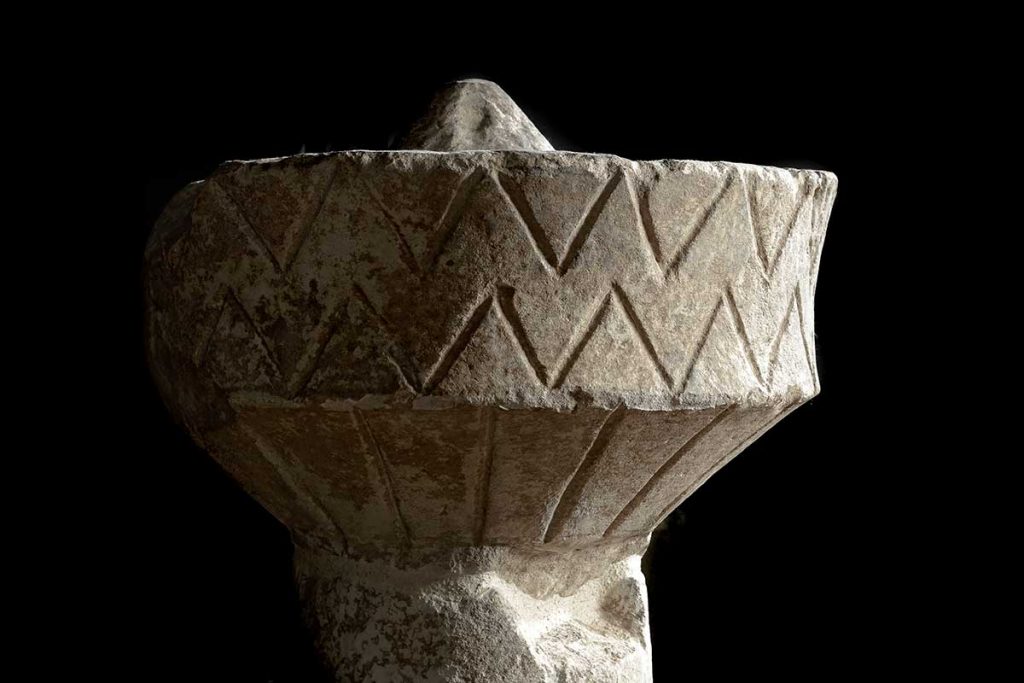
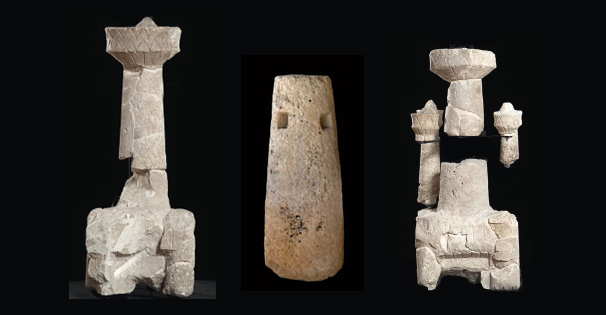
But what identity and belonging do they evoke?
That of one nuragic tribe as distinct from the other tribes? That of a nuragic social class as distinct from the others? Or, lastly, the common identity of the nuragic tribes of the Sinis area as distinct from or in opposition to the newly arrived easterners?
Be as it may, the statues of the boxers, archers and warriors and the stylised reproductions of the nuraghes make up one of the most important creations of Nuragic civilisation in its overall development on the island. However, despite the clear iconographic and stylistic link with the abundant and very famous production of bronze votive statuettes in the whole island between the late bronze age and the early iron age, the statues and the site of Mont’e Prama find no equal in the statuary of nuragic Sardinia.
The patrons, that is the members of the leading communities or clans who commissioned the sculptures as a means of self-representation and self-celebration, seem to be rooted in the local world, but also open to new customs and styles able to increase their prestige and power. We cannot exclude that the artisans who produced them were of eastern origin.
The burial site, albeit recalling with the betyls the heroic tradition of the collective tombs of the giants, consists only of individual graves; this allowed the preservation and presumably the recognition of the personal identity of the dead.
While the sculptures belong to the figurative and symbolic world of the nuragic bronzes, they shift from the votive to the funerary sphere. Moreover, while embodying the worldview of early iron age nuragic people, they seem to indicate the work of foreign carvers and the influence of eastern ideologies and customs.
The statues and the models of nuraghes seem to reproduce in gigantic proportions the votive bronze statuettes, in a cultural context marked by strong tensions and deeply felt historical transformation.



